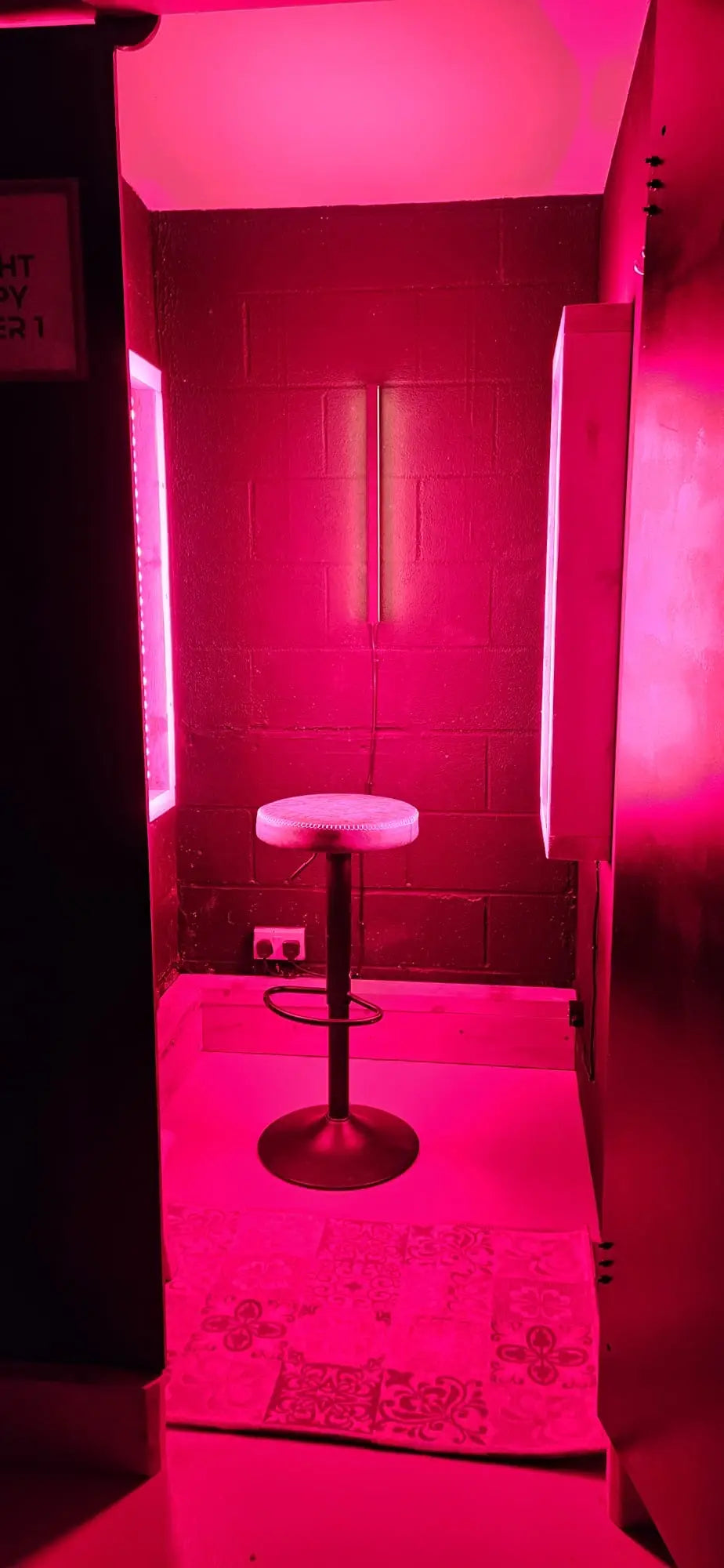
Red Light Therapy: Unveiling the Benefits for Your Body and Mind
Share
Red Light Therapy: A Comprehensive Guide to Its Benefits
In the realm of health and wellness, red light therapy has emerged as a promising modality, garnering significant attention for its wide-ranging therapeutic effects. This non-invasive treatment uses specific wavelengths of red and near-infrared light that penetrate deep into the skin, stimulating cellular processes and supporting the natural healing capabilities of the body. While ongoing research continues to examine its full range of uses, there is mounting scientific evidence that red light therapy can positively impact numerous aspects of health—from rejuvenating skin to enhancing athletic performance and accelerating wound healing.
Benefits of Red Light Therapy
Red light therapy is associated with a spectrum of potential benefits that contribute to both overall wellness and targeted results:
Skin Health
Reduced Wrinkles and Fine Lines: By encouraging the natural production of collagen and elastin, red light therapy helps minimize visible aging signs, resulting in smoother, firmer skin.
Improved Skin Tone and Texture: The increased cell regeneration triggered by red and near-infrared wavelengths helps diminish hyperpigmentation, even out skin tone, and fade the look of acne scars for a clearer complexion.
Enhanced Wound Healing: Red light therapy has a demonstrated ability to increase blood flow and stimulate fibroblast activity, which accelerates the healing of skin injuries, surgical incisions, and chronic wounds.
Pain Relief
Reduced Muscle Soreness and Pain: By targeting inflammation at the source, red light therapy can relieve discomfort and expedite the body’s recovery after workouts or injury, making it ideal for athletes and active individuals.
Improved Joint Pain: Studies link red light therapy to decreased joint pain and stiffness, particularly for those dealing with conditions like osteoarthritis or rheumatoid arthritis, supporting improved mobility and function.
Mood and Cognitive Function
Elevated Mood: Exposure to red light therapy may enhance serotonin production, a neurotransmitter pivotal to emotional well-being, potentially reducing symptoms of stress and low mood.
Improved Sleep Quality: By helping regulate circadian rhythms, red light therapy may promote deeper, more restful sleep and assist those with insomnia in establishing healthier sleep patterns.
Athletic Performance
Enhanced Muscle Recovery: Athletes frequently use red light therapy to support recovery, as it reduces inflammation, muscle fatigue, and oxidative stress, leading to quicker turnaround times between intense workouts.
Improved Strength and Endurance: Some research suggests that regular exposure to red light may optimize muscular performance, supporting increases in muscle mass, endurance, and functional capacity.
Other Potential Benefits
Hair Growth: Red light therapy holds promise for individuals seeking solutions to hair thinning or pattern baldness, as it can energize hair follicles and stimulate healthy hair regrowth.
Acne Treatment: By targeting the bacteria responsible for acne and minimizing inflammation, red light therapy contributes to fewer breakouts and calmer skin.
Anti-Aging Effects: The combined benefits of boosted collagen synthesis, cell regeneration, and reduced oxidative stress help maintain youthful-looking skin and slow the visible aging process.
How Red Light Therapy Works
Red light therapy functions by utilizing specific wavelengths of visible red and near-infrared light that deeply penetrate the skin and reach the mitochondria within cells. Mitochondria then absorb this energy, resulting in several beneficial effects:
Increased ATP Production: Enhanced production of adenosine triphosphate (ATP) fuels essential cellular activities, promoting vitality and optimal tissue function.
Enhanced Cell Regeneration: Regular exposure supports the repair and regeneration of damaged tissues, driving the body’s natural healing mechanisms—particularly important for wound healing and post-injury recovery.
Reduced Inflammation: The anti-inflammatory action of red light therapy can alleviate swelling and discomfort linked to chronic conditions and acute injuries.
Safety and Side Effects
Clinical studies and widespread use suggest that red light therapy is safe for most individuals when proper guidelines are followed. To maximize both safety and benefits:
Eye Protection is Crucial: Avoid direct eye exposure to therapy devices to prevent potential damage. Always use appropriate protective eyewear during sessions.
Potential Side Effects: Mild effects such as temporary redness, warmth, or irritation can occasionally occur but are usually brief and resolve quickly.
Consult with a Healthcare Professional: Especially if you have preexisting health concerns, are pregnant, or are currently taking medications, a consultation can ensure suitability and safety before starting red light therapy.
Conclusion
Emerging as a versatile tool in the pursuit of enhanced wellness, red light therapy offers a non-invasive approach that may contribute to better skin, improved mood, relief from pain, and superior athletic performance. From accelerating wound healing to supporting daily vitality, its benefits have drawn attention from health professionals, athletes, and individuals wanting natural avenues to boost their health. As interest grows and research continues, speaking with a qualified healthcare provider remains essential for personal guidance and to leverage the full advantages of red light therapy in your health routine.